… and Lenny Bruce is not afraid.
Now that I have that earworm firmly established, let’s get to the pics.
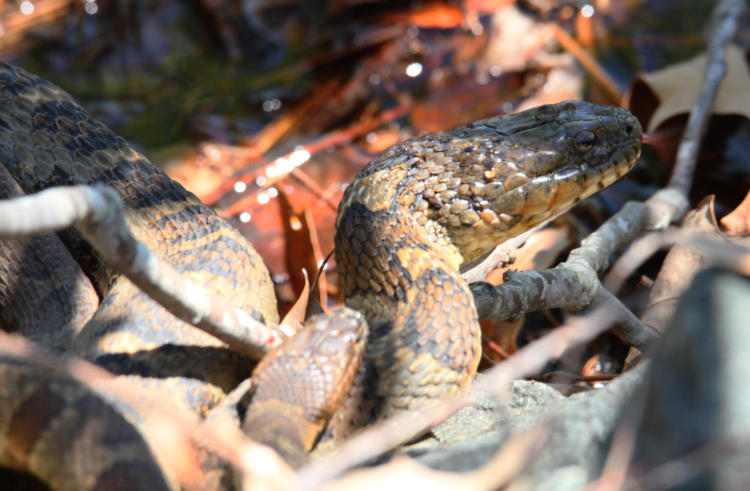
A few days back we got a ton of water dumped on us here in central NC, like most of the country I believe, right after temperatures had gotten above 25°c, then dropped precipitously (sorry) during and after the rains. Yesterday, with the sun out and the temperature climbing again, I visited Jordan Lake to see what was happening, and the first thing that I noticed was the plethora of northern water snakes (Nerodia sipedon sipedon) basking on the rocks alongside the boat ramps. Given that I’d found maybe three watersnakes in years on the lake shores there, this was unprecedented; I believe they were driven out of their hidey-holes by the significantly-higher lake levels, at the same time trying to get their internal temperatures up to snuff. Of the two above (yes there are two,) the smaller was perhaps slightly smaller than average, but the larger was quite impressive, close to my wrist in girth. Despite this, they were all very spooky and dove into the water if I was the slightest bit incautious, so these various pics required careful stalking.
Save for this guy.
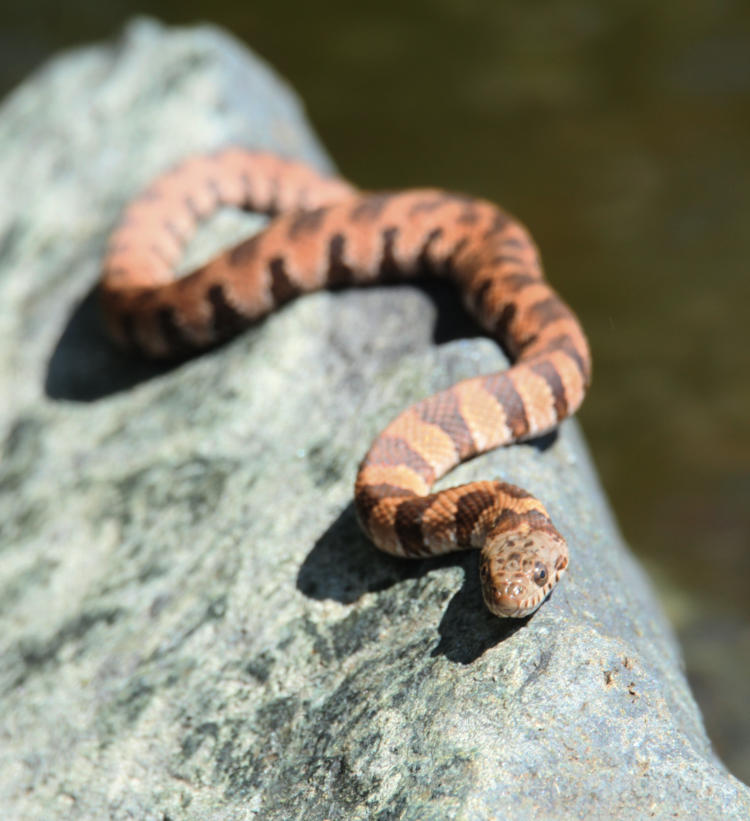
Easily the smallest with the girth of my finger, this one showed all the others as the cowards they were by remaining atop this rock in plain sight as I worked along the shore. Or you could just consider it too stupid to know better – either works.
I returned again today, earlier in the morning, to see how many more I could get, and of course to see the AM bird action, but that netted me this favorite perspective:
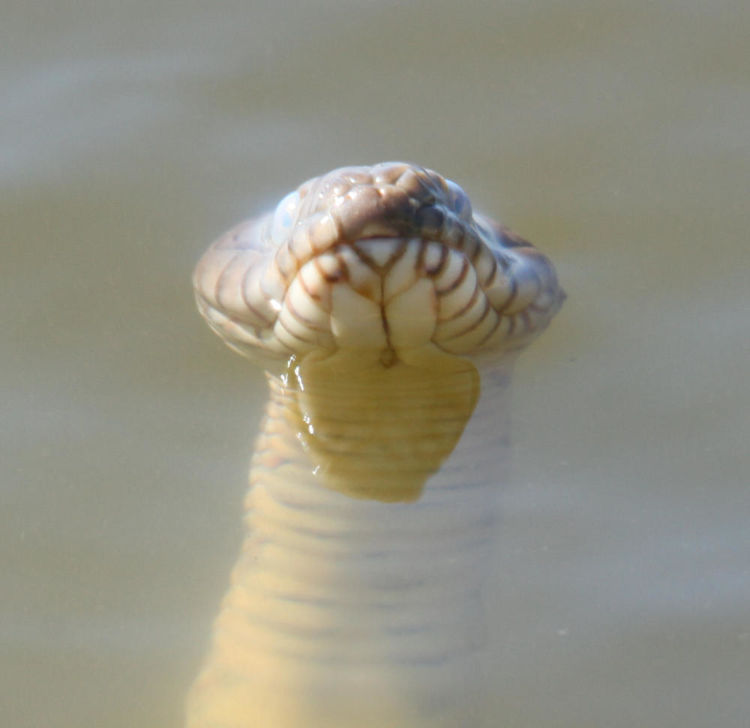
Not for nothing do they call them watersnakes, and this one was checking to see if the coast was clear (literally) before venturing out again to warm back up. They can only hold their breath for about two minutes, and most times they raise their snouts very close to debris, roots, or clutter to remain camouflaged as they check for danger, but this one couldn’t have been more obvious, perhaps chastened by the little one yesterday. The cloudy eyes (which many of them displayed) indicate that it would be shedding soon, and yes, it does limit their vision, which in turn makes them more defensive and quicker to bite if threatened. They’re non-venomous and harmless – the bites sting a bit, but not even like wasps, and I can’t count the number that I’ve received (though none either of these days, I’m sorry to inform you Mr Bugg.)
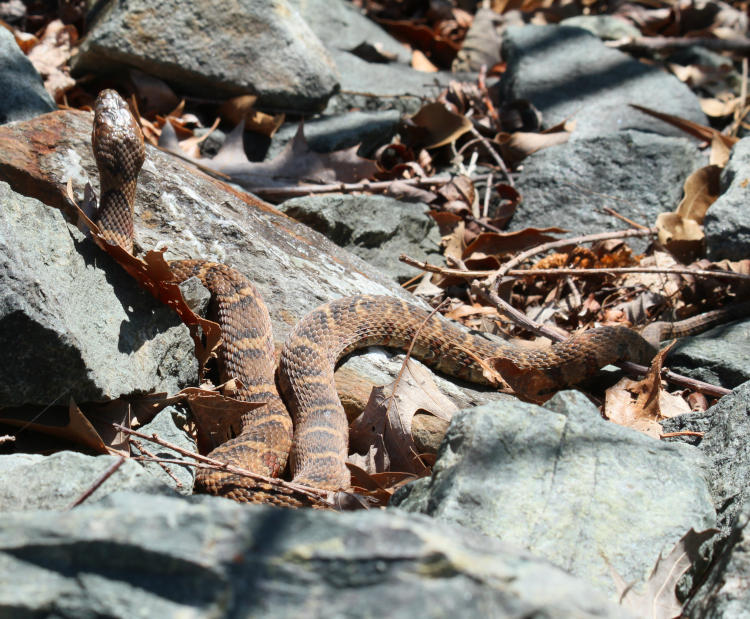
This one was about average in size, so roughly half a meter long and 4-5 cm in thickness, and it slowly eased out of the water and along the rocks to a good basking point as I watched. Some closeups of the head showed why it never reacted to my careful movements only a few meters away.

Aside from catching the tongue out, we’ll look closely at that eye, which is nowhere near normal in appearance, nor is it how they appear when close to shedding – I suspect it’s an injury, though how recent I couldn’t begin to say. What was curious to me was that it consistently maneuvered with this side facing the boat ramps, away from the sun, which does not seem to be the most efficient at spotting danger. The biggest threats would likely be from the land side, while if there’s any vision in that eye at all, it would be more useful on the sunny side where something throwing a shadow across it would still indicate danger. But then this takes consideration, and it’s hard to say how much snakes actually have, though it’s certainly not much.
I heard some sudden, suspicious rustles on the other side of the boat ramps too, but likely they all came from species like this:
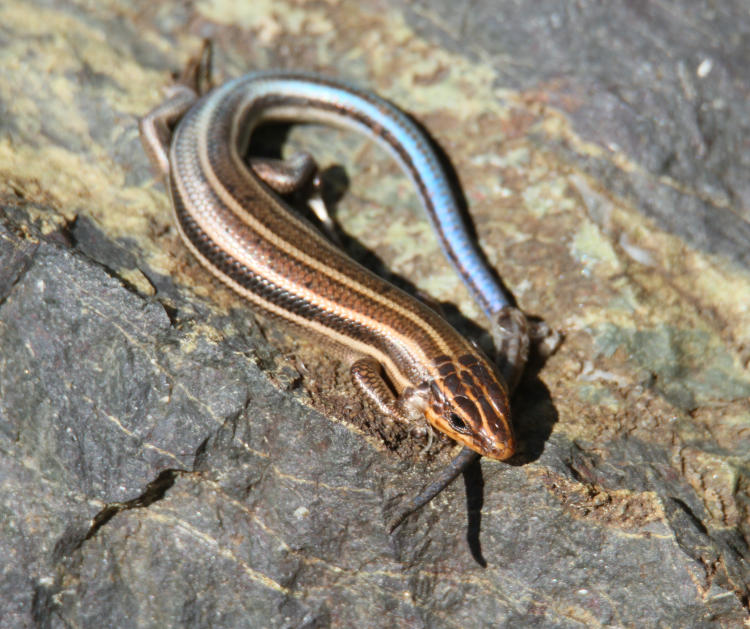
This is an American five-lined skink (Plestiodon fasciatus,) and unlike the snakes, they don’t shed their skin in one nice intact piece, because legs, so this one is sporting the remnants on the side of the head and along the tail – it took seeing these images, cropped, to determine that it wasn’t actually injured like it appeared in the viewfinder. This little guy would have been an easy meal for even the smallest of the watersnakes, so it’s better that he was well away from them – or at least the ones that I’d seen myself. It could, as I type this, be making its way through the alimentary canal of yet another…
Though I did mention birds, right? Not too many this time, but enough.
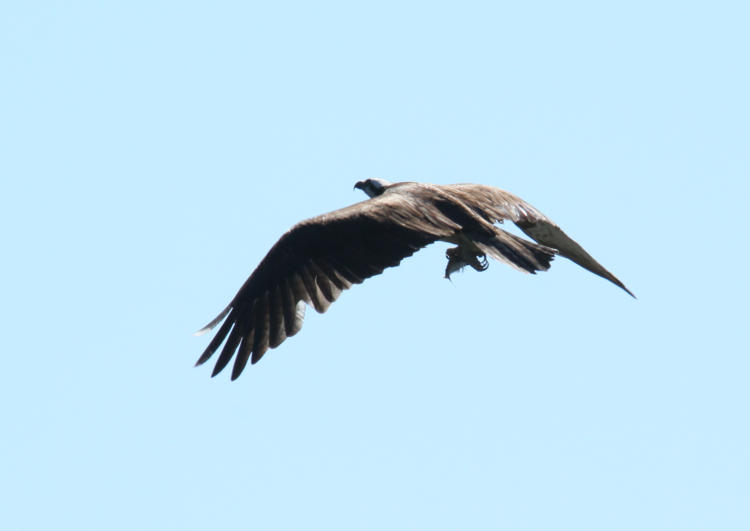
While I never saw the capture, this osprey (Pandion haliaetus) cruised past grasping a nice fish – or perhaps I’m assuming too much about the fish, which could have been a serial killer for all I know, in which case, nice job, osprey! We’re right at the beginning of nesting season here, but as I was soon to discover, this one was not bringing home the takeout meal.
[A small photographic aside: these were all shot with 1 full stop overexposure compensation for the bright skies, and should have been a little more though it would have bleached the skies pure white, but I was shooting almost due east, looking at the shadowed side of the bird, so there was only so much that could work anyway.]
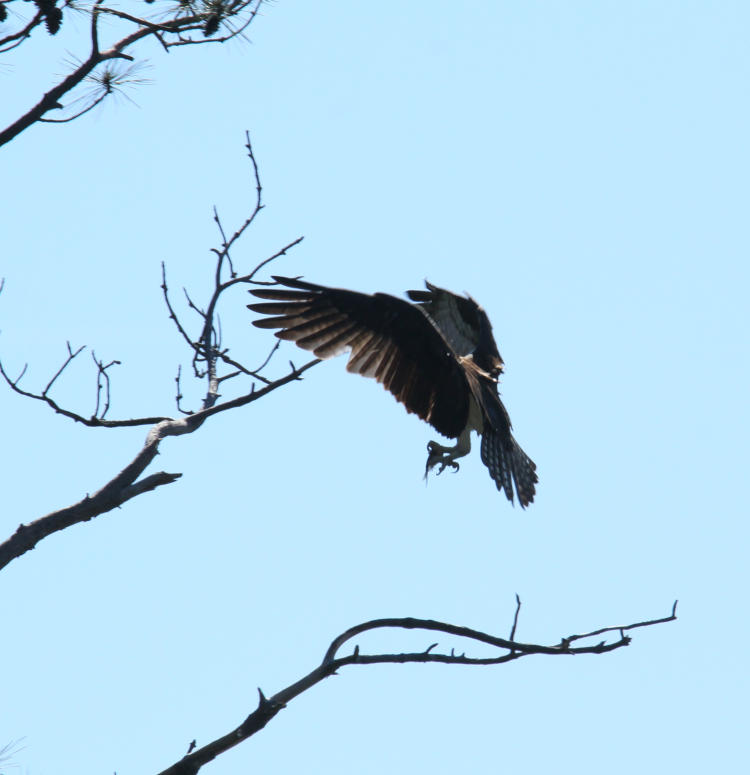
This dead tree sat right on a small point between two boat launch areas and is easy to plot in Google Earth, so it let me perform a small exercise. I estimated the distance at about 75 meters, but in reality it was closer to 125, so we see how accurate my perception is. Next time I’ll just assume I’m right and not bother with facts – you know, the Republican way…
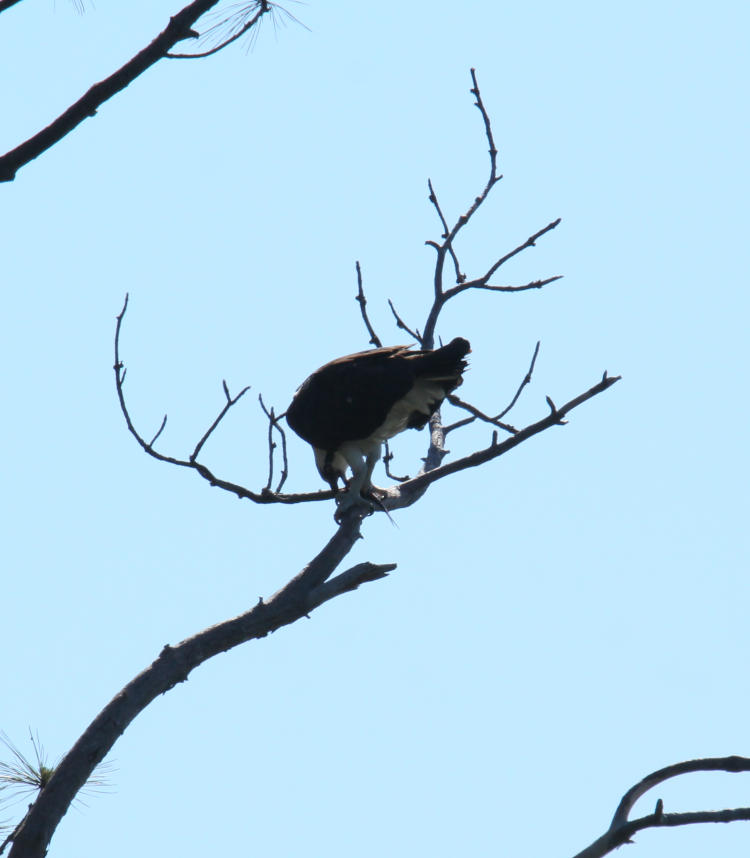
Only a few osprey were showing while I was there (and two distant bald eagles which didn’t make for worthwhile images,) none of which wanted to do much hunting even though the lake was thin on boat traffic and the thermals pretty distinct; I know because I could see the vultures riding them. So this one finished its meal and then sat for roughly a half-hour just chilling with its lake view.
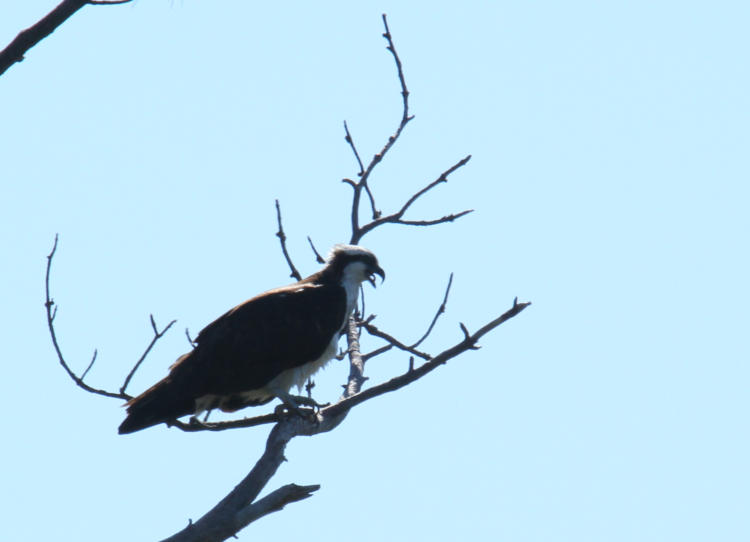
Actually, I could check that too with the timestamps on the images, and in this regard I was much better: 26 minutes between the last apparent actions with the fish and when it took flight again, though I admit to not remaining locked onto it the entire time. I did catch this horrendous belch, however, one that echoed back from across the lake.
[I lie of course; the osprey might have been calling, warning off another that circled nearby a few times, or simply yawning, or trying to get that taste out of its mouth. But I like the tongue.]
However, it left its perch, cruised almost directly overhead and then, with elaborate casualness, skimmed down to the lake and snagged another fish as if it had left it there earlier – no circling, no pausing or backing, nothing whatsoever of the telltales to warn a guy that a capture is imminent.
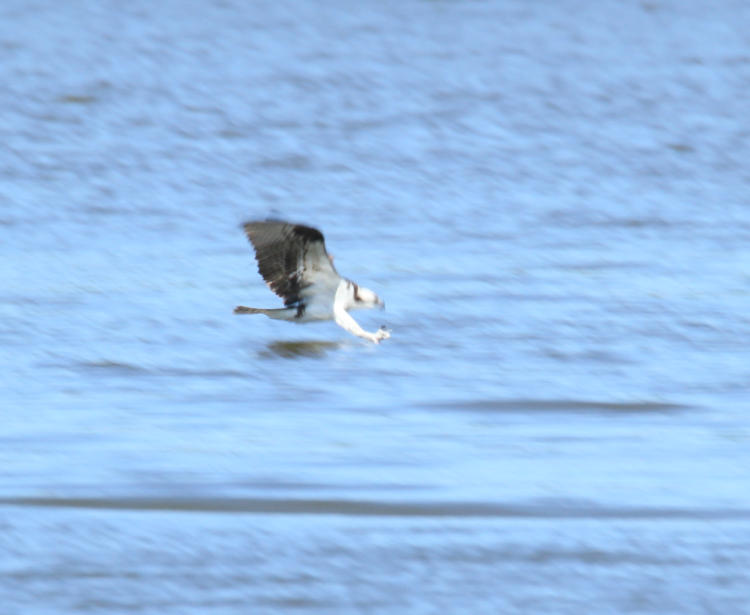
The autofocus and/or the image stabilization weren’t really up to the job, and the sequence was crap, but I throw down just a couple for the record.
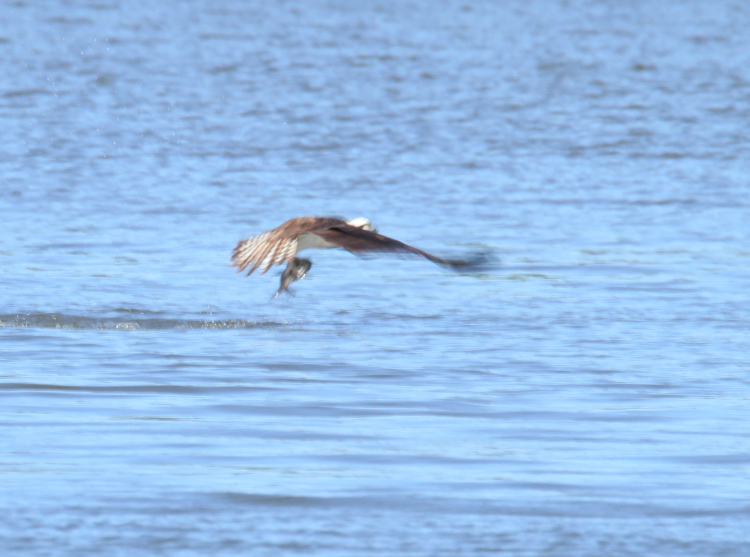
Definitely a successful capture, and appearing almost effortless too, but this one was carried away around the point and I never saw where they went to. Maybe this time it was to the wife sitting on the nest…
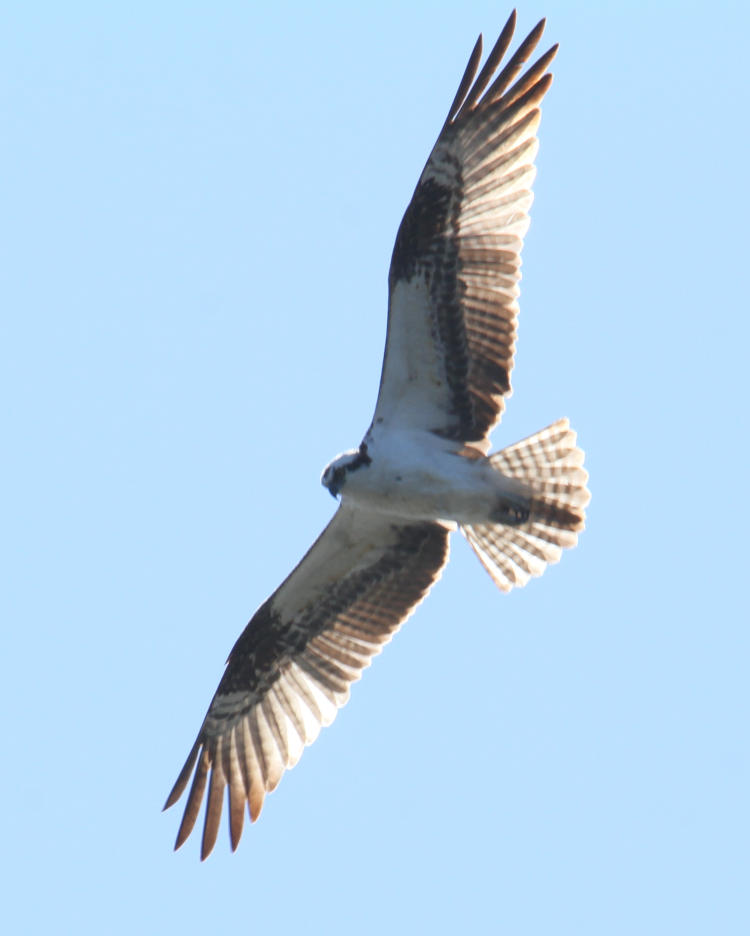
Another did circle overhead a few times, pretty close, and I could do a sequence of frames as it was backlit by the sun, which came up fairly nicely. No missing or damaged feathers, symmetrical, good angle – could have been a tad sharper, but I’ll keep it for now.
As I was returning to the car, I spotted a red-tailed hawk (Buteo jamaicensis) circling in the distance, then another, and they drifted closer and permitted me some decent detail shots.
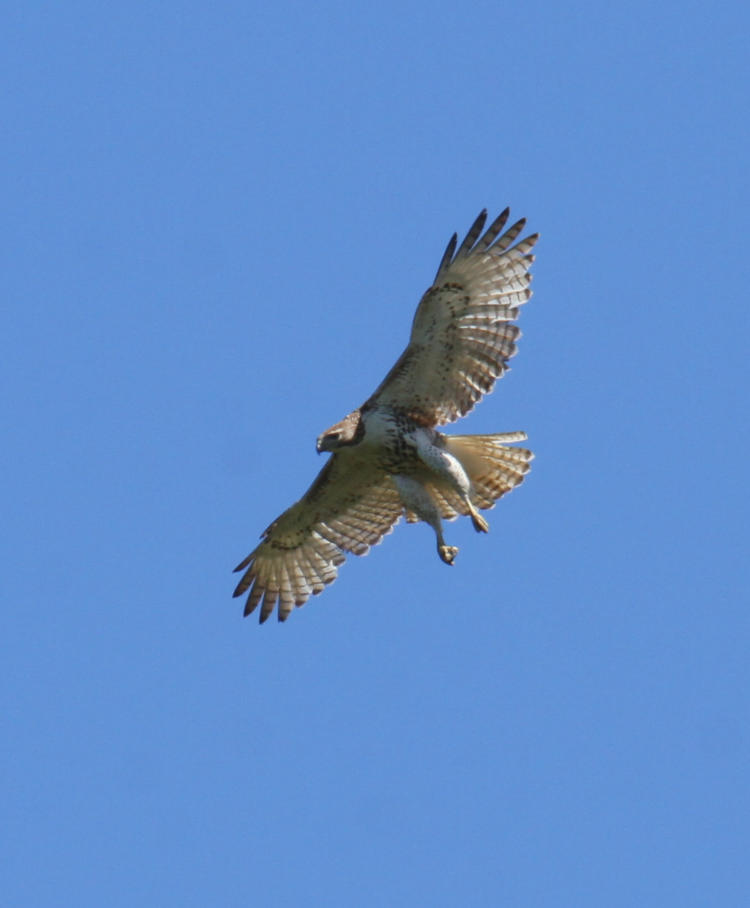
The two were in moderately close proximity and this one, the highest, dropped its talons down, and I wasn’t sure if I was about to see a territorial dispute or a mating display. It eventually turned out to be neither, as they drifted apart again, but this one thought something was going to happen, anyway – they don’t cruise around like that. They cruise around like this:

I’m not sure if it was the same as above or not, but this one very cooperatively skimmed quite close overhead – I’ve learned my lesson now and offer no estimate of distance. But we can now see the talons tucked up under the tail, nice and streamlined, while it steers for some reason visible only to it in the trees behind me. The tail doesn’t appear to be very red, and often doesn’t, but the pale belly with the crossing band of dark speckles is more indicative of the species.
And yeah, an aeroplane to flesh out those lyrics:




















































